Industry Safety Alerts
These are industry safety alerts and lessons learned documents issued by companies and regulatory authorities and are published by USAG to assist the industry understand the root cause and contributory factors behind a specific incident.
The documents will address these with lessons learned which may be of benefit to USAG members.
The documents were not reviewed or approved by USAG but they are publically available or we do have permission from the owner for publication to improve industry standards and reduce the number of strikes.
Unidentified Low Voltage Cable Cut With Hand Tool
This safety bulletin concerns a low voltage cable that was not identified and was inside a pipe believed to be water. Due to other positively identified water pipes in the vicinity it was assumed that the pipe containing the cable was also water. Upon cutting the pipe there was a pop and puff of black smoke as the worker cut and damaged the cable. Fotunately the worker was not injured in this case but had the conditions been unfavorable this could have resulted in an injury or fatal.
This bulletin shows the importance of positive identification and the danger of making assumptions of which type of services are within your worksite once they have been exposed. With thanks to Thames Water for making this available for others to learn from.

Undetected Low Voltage Cable Strike
This safety alert is regarding damage to a low voltage cable on a work site being excavated to investigate for the presence of asbestos. It is an interesting investigation showing the difficulties experienced in detecting the cable with other metallic objects in close proximity. In this case using the genny to clamp on to a nearby pump would likely have increased the ability to detect the cable.
With thanks to Thames Water for making this available for others to learn from.
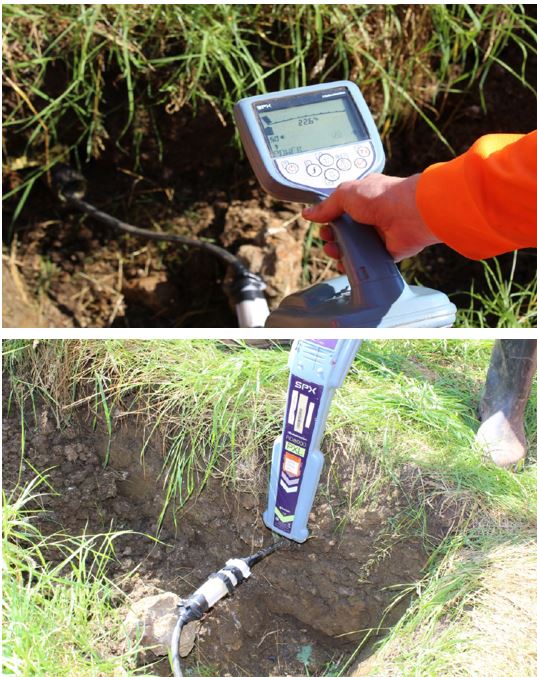
300mm Water Main Strike
This incident involves damage to a 300mm water main whilst installing new drainage assets. The damage occurred to the pipe even though it was known to be in the vicinity of the excavation and marked up.
The report identifies that permit to dig conditions of not to mechanically excavate within 500mm of a service and also to physically Identify using trial holes, in this case there had already been a vacuum excavation rig onsite to identify services. Here we see the importance of having a permit to dig process but importantly having the controls in place to ensure that the permit is adhered to.
Please download for full details of the report and our thanks to Osborne Construction for making this report available for the benefit to all.

11kV Cable Strike while concrete breaking
With thanks to Highways England for sharing this incident report. This incident involves an operative using a jackhammer to break concrete striking and damaging an 11kV electricity distribution cable. An arc flash occurred with the operative experiencing minor burns with damage to his PPE trousers and and the breaker chisel was damaged. The photograph of the damaged chisel shows just how powerful a strike of this nature can be and the operative was fortunate to have more serious injuries and shows the importance of PPE at the same time.
The incident report indicates this cable was found buried shallow and encased in concrete with the provisional findings showing that inadequete survey practices taking place to confim the depth and postion of the cable.
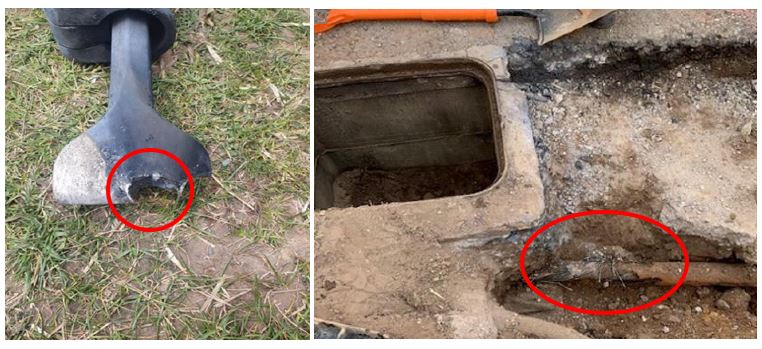
Water Service Pipe Left Exposed in Ditch
This is more of an example of what is likely to happen to a pipe or cable if is installed in a non compliant way.
The pipe was not mapped and was not picked up through traditional survey methods and was exposed as it crossed the drainage ditch. A pipe installed in this way was almost always going to have a destiny with being damaged as the ditch was cleared and could have been much worse if it was gas or power. One for the files of how not to do things when installing a cable or pipe. Don’t leave a problem for someone else to find and deal with further down the line.

Damaged Street lighting Cable
Whilst undertaking trial holes to enable connections of two known power cables in the area, an operative using insulated hand tools came into contact with a low voltage street lighting cable, damaging the outer sheath of the cable.
A number of different issues have been highlighted in this report and in particular was the use of the CAT (Cable Avoidance Tool) not being used in conjunction with the GENNY ‘Signal Generator’. The GENNY is key to detecting some types anf cables and in particular deenergised streetlight cables during the day.
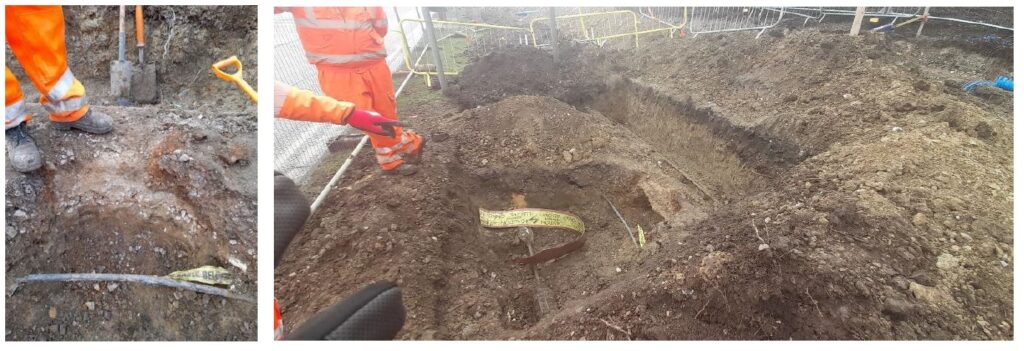
High Pressure Gas Main Strike - Upper Thames Crossing
This safety alert is with thanks to Highways England regarding a strike to a high pressure gas main during works for trial pits/boreholes.
There are some of the more usual process failures when it came to use of cable and pipe detection equipment and visual assessment of the site. But it raises some important points about design work to ensure there are no conflicts with already present cables and pipes. Also procedures around the electronic device storage and use of design data and ensuring it’s validity for the works about to be undertaken.
With more and more designs, permits and approvals taking place electronically on devices at the worksite this shows a really good example of what can happen should a controlled process not be fully in place.
Thankfully the strike did not rupture the pipe in this incident and it is with thanks that this learning document has been shared for the greater good of the industry.

Mobile Concrete/Crane Collapse & Injury Dec 2020
Mobile cranes and concrete pumps.
Usually the most common cause of incidents with this equipment are risks associated with lifting and contact with overhead electricity lines.
However as you can see from this incident overseas you also need to take account of the ground on which you set up and deploy the outriggers/supports to lift heavy loads. Be aware of any underground pipes and cables and do not place the outriggers/supports over these services. Undue pressue from heavy loads being lifted can cause damage to underground utility pipes and cables.
In the case of this incident underground pipes were damaged during lifting causing ground subsidence and the vehicle and load became unbalanced and tipped over. The operator was pinned causing leg injuries. When planning lifting or concrete pour operations from mobile plant ensure that your pre planning and safe systems of work include checking for the presence of underground as well as overhead services at your lifting site. Please share this around to any of your colleagues or operations the deal in the design, planning and execution of works where vehicles of this type are used.

Supporting LV to 33kV Cables - Case Studies and Guidance, SP Energy Networks - Dec 2020
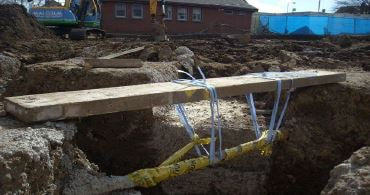
Gas and Electric Service Strikes - May to Aug 2020, M40 Improvement Works

'A Striking Reminder' Excavator Contact With 11kV Overhead Lines - September 2020
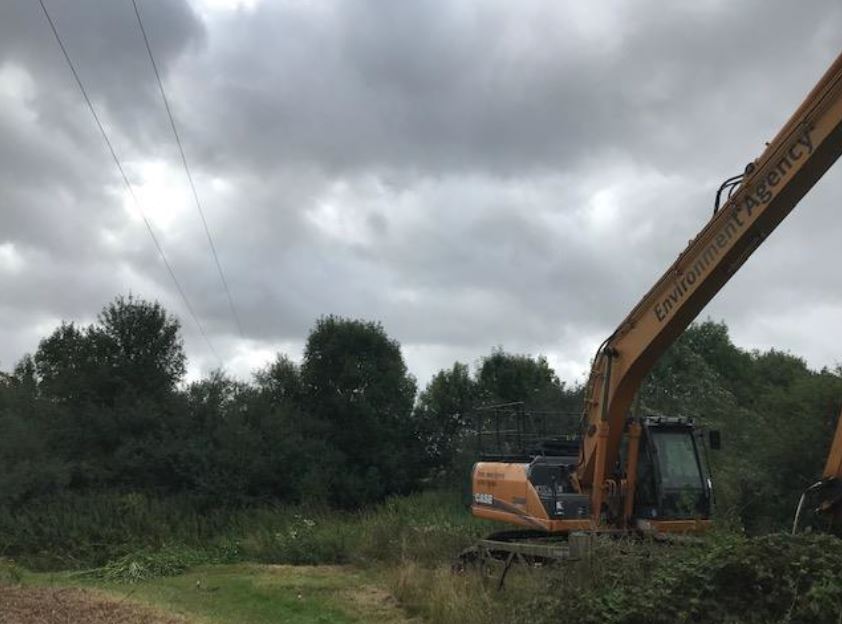
Surface Cable Damage by Mower - April 2020

Flooding caused by thrust block removal - September 2020
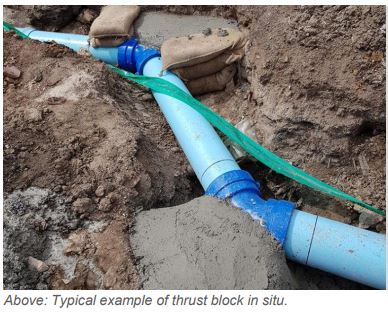
Strike to Low Voltage Cable - New Build Housing With Embedded Network - Leicester, June 2020
Cable strike to a low voltage distribution network damaged by a third party at Hamilton, Leicestershire resulted in a power outage to residents. This network was installed and owned by another company GTC and is a low voltage distribution network embedded within the wider network footprint of Western Power Distribution.
USAG recommends if you are working in a relativley new build area you should check plans for the presence of low voltage network where there should be. Below is a copy of the plan for this location and you can see missing low voltage schematics from the plan on the eastern edge where new homes are built and occupied. If you come across this situation you should check for further asset owners. The usual distribution network owner for the area should be able to help you identify the network owner if there are no above ground markings or signage on substations.

Damage To Cables - Encased in Concrete - London - June 2020

Malicious 5G poster/stickers - Sharps Risk attached to Electricity/Telco/Street Furniture - National
See attached bulletin supplied by Highways England relating to 5G protest posters and stickers left on electricity cabinets, poles, telco equipment that some of our members might encounter during their work. These may have blades and needles behind them intended to injure.
Please share and distribute to raise awareness of this issue
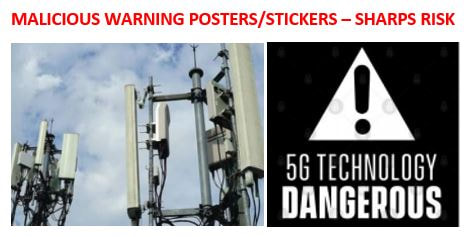
National Grid Peterborough - Excavating Within 3 Metres of Live Asset - March 2020

University of Birmingham - National Buried Infrastructure Facility - Fall From Height Fatality - January 2020

Milton Keynes Gas Strike and Iginition - November 2019

Surface Collapse from Void created by Water Leak - October 2019
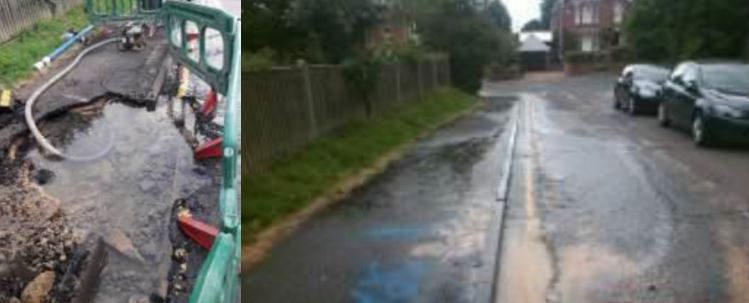
Removal of PPE in Active Work Zone - Burn Injury from LV Cable Failure - October 2019
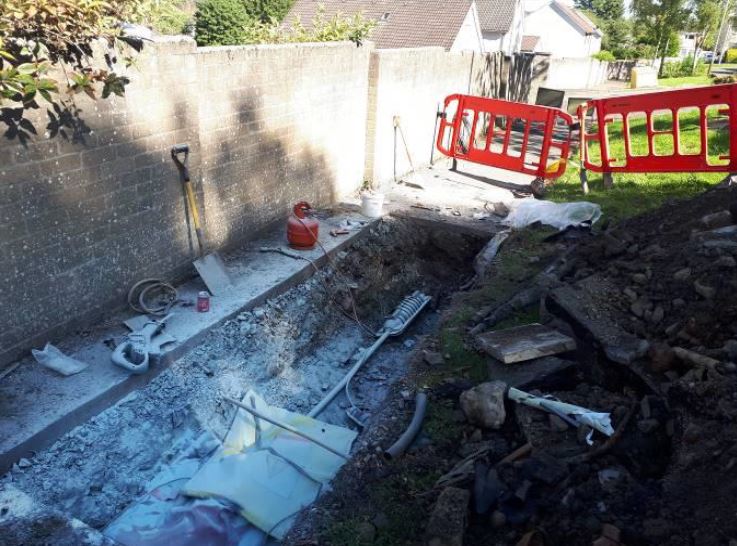
32mm PE Gas Main Damage - September 2019

11kV Strike with Auger - July 2019
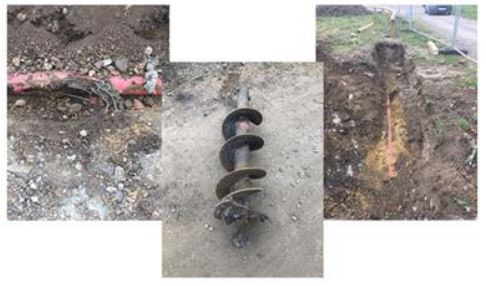
Ingrebourne Valley - 415V Strike July 2019

Earlston - 11kV Strike July 2019

Case Study - Electrical Cable inside Gas Ducting

Sellafield - 132kV Cable Strike, 2018

Mullingar, Co. Westmeath - 10kV Cable Strike, March 2019

Learning Alert - Water Pipe Identification - May 2019
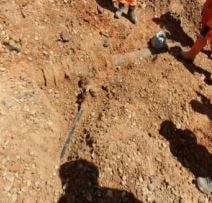
Permit to Excavate Completed Incorrectly - May 2019

York - 11kV Cable Strike, November 2018

Positive Intervention - Cable Encased In Concrete
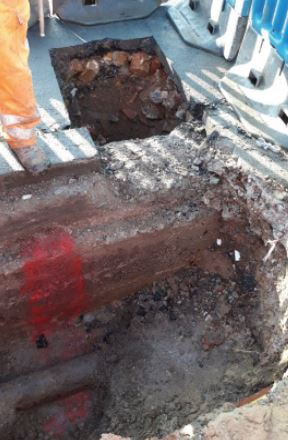
Wisbech - 11kV Cable Joint Explosion - Feb 2018
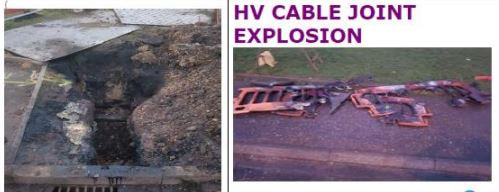
London - 11kV Flashover Explosion, May 2018

